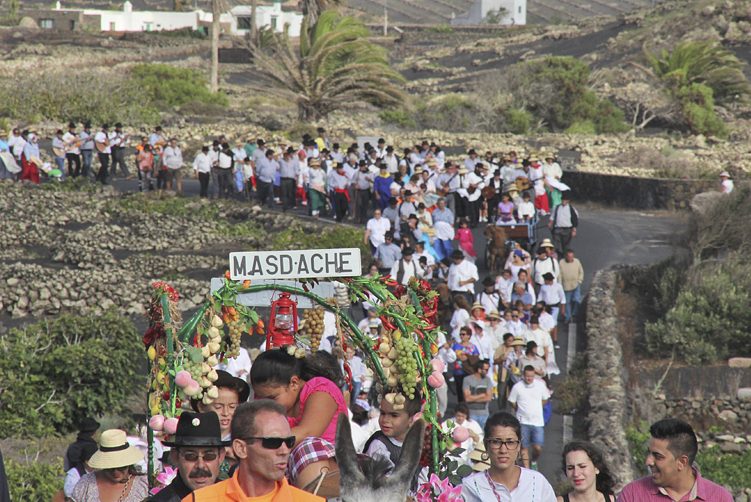


Folklore
Although the word folklore defines the set of traditions, legends, beliefs, customs and popular proverbs, in this text only the musical aspect will be referred to.
Some specialists affirm that the musical folklore of the islands is the result of the mixture between the aboriginal percussionist music, the peninsular sounds arrived with the conquest and colonization and the later contribution of the Caribbean chords brought by the Canarian emigrants, to which are added the influences generated by Genoese, Jewish, Flemish and British merchants in their flow between Europe and America.
During the 19th and 20th centuries, the influence of places as disparate as Central Europe or Latin America is felt on the islands and from this time are the waltzes, polkas, mazurkas or saloons which had an instrumental support of strings.
Habaneras, tenths, Cuban points and boleros arrived from Latin America, which over time merged with some of the already known ones and became part of the island culture. Some of the instruments with which this music was articulated were also imported.
Isa
It is characterized by having an intense ternary rhythm, a fast and cheerful song, and for being a dance of collective participation of the best known.
The dance is a dance that is executed loose given its joy and showiness. The group performs a series of circles, bridges, chains and figures with their differences by islands.
Over time, a series of figures have been incorporated in which coordination between the participants is of vital importance, thus demonstrating the influence of the cultured dances of 19th century Europe.
Folia
It is the oldest regional song and is characterized by the externalization of feelings.
Its remote origin is in Portugal and its subsequent modification in Andalusia in the 16th century, where it was adapted to popular court dances.
Her dance is delicate and loving. The man cannot touch the woman and moves face to face, from side to side, snapping his fingers, turning around and following the ancient tradition of the woman changing partners, who returns after a series of steps. .
Malaguena
This song, probably from the 18th century, comes from the slightly adapted Andalusian malagueña.
It varies according to the island, although it is generally made up of four octosyllabic verses that are repeated. The malagueña from Lanzarote exceptionally has a composition in limericks.
It is characterized by being a sad, sweet, meek and melancholic song generally dedicated to mothers and love.
The dance is a collective dance of five, six or more couples where the dancers form circles, figures, tunnels and braids in the likeness of the isa.
It begins by dancing on the same spot for several bars and when indicated, the men go outside the circle to dance with the opposite couple for another series of bars.
Sorondongo
This dance may have its origin in a children’s song from the 16th century and it is difficult to agree on how and when it arrived in the Canary Islands.
Almost certainly it was introduced in Lanzarote by José María Gil, founder of the mythical Ajey de San Bartolomé Group.
In the Sorondongo of El Hierro, “El Flaire” is reflected, a dance where only one couple dances facing each other.
The man can ask the woman he wants to dance without opposition from her and then he leaves and she asks another man to dance and so on.

